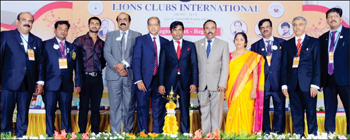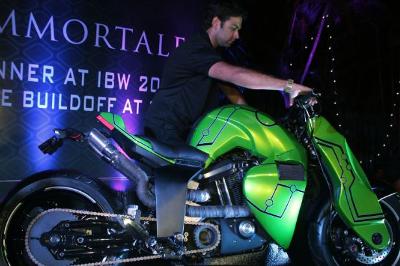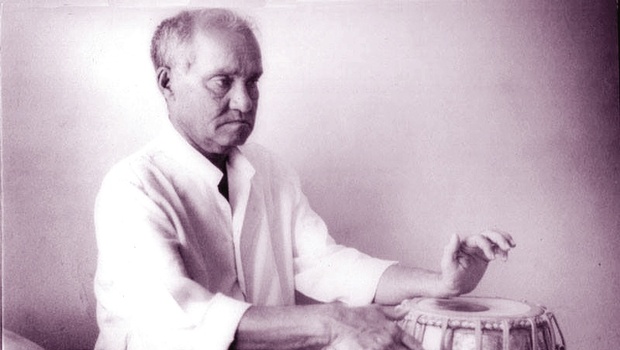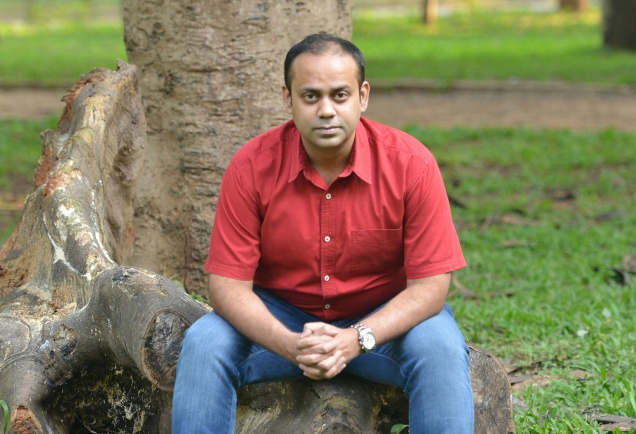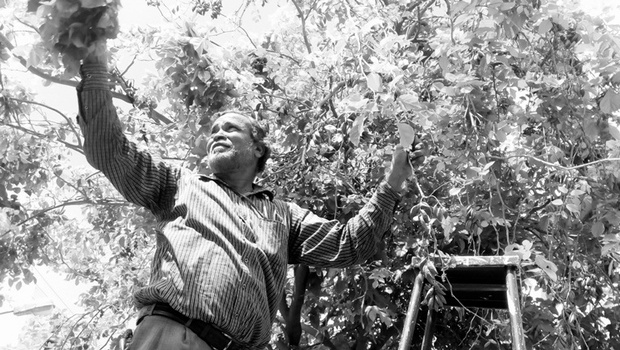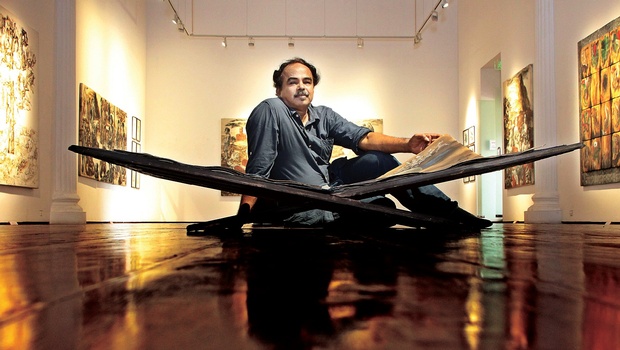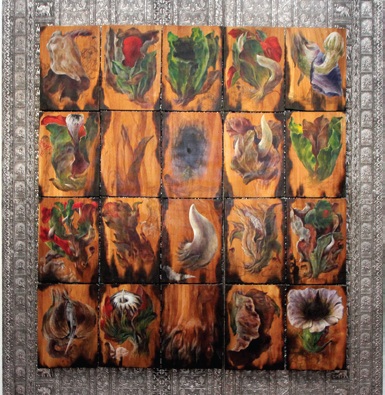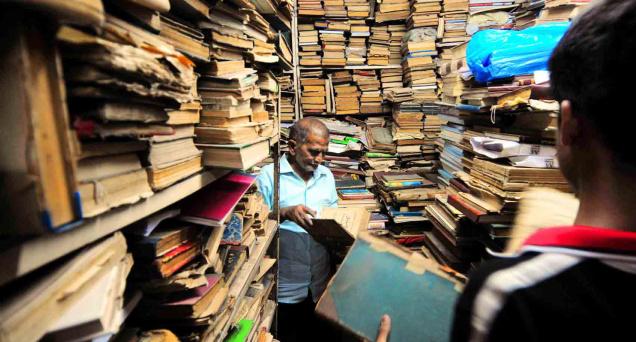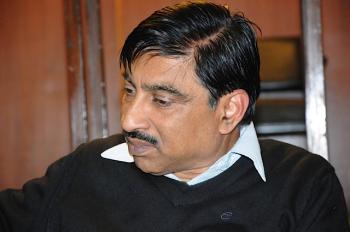
KERALA :
LAST year, a young journalist friend, Rajeev Mangottil, invited me to speak at the Onam Day celebrations at Jamia Millia Islamia. The name of this venerable institution is derived from the Urdu language in which Jamia means ‘university’ and Millia means ‘national’. That is where I first met the youthful-looking K.K. Muhammed, Director of the Archaeological Survey of India (ASI).
Rajeev whispered into my ears that Muhammed would soon be retiring and his story on him was scheduled to appear in the Malayala Manorama supplement. Since the Malayalam daily is fond of showcasing every Malayali as an achiever of sorts, I was not greatly impressed.
One reason why I underestimated him was that I have a poor opinion of the ASI. Just last fortnight a friend from Punjab SMSed to say that he had visited Nangal and seen the glass case which commemorates Chinese leader Chou en Lai’s visit and the discussions he had with Prime Minister Jawaharlal Nehru while formulating Panchsheel or the five principles of peaceful co-existence. I had visited the place a couple of times and was shocked by the fashionable sofa in the glass case. I checked and found that the two leaders had used caned, wooden chairs, which the officials concerned did not find impressive enough to be showcased.
In contrast, I saw at Potsdam, near Berlin, the large table and the chairs used by Stalin, Churchill and other victors of the Second World War, while deciding to divide Berlin into four zones and to constitute the United Nations, preserved in the same manner in which they were used, attracting thousands of tourists every year. But the first time I visited Shimla, I was unable to see the table and the chairs used by Indira Gandhi and Z.A. Bhutto for finalizing what is known as the Simla Agreement because no official had any clue about their existence.
Muhammed preferred to speak after J. Gopikrishnan, the ‘Pioneer’ reporter who unearthed the Spectrum scam, and I had our say. He spoke extempore and quoting the Vedas and the Upanishads, he took the listeners on a conducted tour of ancient Kerala, where the persecuted Jews found asylum and Semitic religious ideas flourished and enriched the native cultural practices and traditions. It was apparent that he had an excellent command of Sanskrit, the language of the gods. No, he did not say anything about the ASI or the work he had been doing.
He gave me his visiting card, which said that he lived in the Red Fort. He certainly could not have found a better place to live in than the fort the Mughals had built and from which they ruled the country. No other monument has witnessed history as the Red Fort from the ramparts of which the Prime Minister addresses the nation on Independence Day. It would not be an exaggeration to say that Muhammed breathes history and archaeology, rather than air.
So when I received an invitation for his lecture on the ancient churches of Goa at the Kerala Club, I could not resist the temptation to attend. What makes Muhammed stand out as an archaeologist is the passion he has for archaeology. We have all studied about Akbar the Great and Din-i Ilahi, the divine faith, he propounded by incorporating the best from Islam, Hinduism, Christianity, Buddhism, Jainism and Zoroastrianism.
It was at Ibadat Khana, the House of Worship, that the Emperor used to hold discussions with religious scholars. Miniature paintings that depict Akbar meeting Christian theologians exist. But where exactly was Ibadat Khana?
Mohammed studied the painting thoroughly and believed that it could be excavated at a particular spot in Fatehpur Sikri. He was in his late twenties and could not, therefore, convince his seniors, who all had a different belief. But he started excavating on the spot and found that the dome, the antechamber, the different layers and the gate depicted in the painting matched his excavation. It was a great archaeological discovery for which then Prime Minister Indira Gandhi congratulated him. What’s more, he also discovered a Christian chapel and a bazar in the same area.
Ask Muhammed and he will tell you that restoration of the 1300-year-old Bateshwar temple in Madhya Pradesh as the high-water mark of his career. He found hundreds of temples in a state of ruin, devastated as they were by an earthquake. Restoring them was a challenging task. Nobody seemed to be bothered. He had heard that dacoits would occasionally drop in to worship at the Hanuman temple there.
One day while returning to his workplace, he found a person smoking beedi in the temple. Muhammed rebuked him for smoking in a sacred place, little knowing that he was none else but dacoit Nirbhay Singh Gujjar! Fortunately, the dacoit did not pull his trigger and he left only after he was told by Muhammed that he belonged to the Gujjar-Pratihara dynasty that had once ruled the region.
He found that he could not carry on his work without the cooperation of the MP government, which was disinterested. Then he hit upon the idea of writing a letter to the then Rashtriya Swayamsevak Sangh (National Volunteer Corps) Sarsanghachalak, V.S. Sudarshan, telling him that though the BJP ruled the state, its government was not at all interested in restoring the ancient temples.
The RSS chief took up the matter with the Chief Minister, who ensured that he received the full support of the state government. He also had to contend with the mining mafia, which took a dim view of the restoration work. Finally, he was able to restore about 80 temples while the work is still going on.
I recently saw a documentary telecast by Asianet on the Bateshwar temple complex, which has started attracting tourists. Restoring a temple from the ruins is not an easy job. One should have a great knowledge of the art of temple construction. On TV, I heard Muhammed explain to the viewers how he came to the conclusion that a statue of Nandi could only have been at that particular spot. Rome was not built in a day. Nor had he learnt archaeology in a day.
Muhammed is modest when he says, “I have always been inspired by the Upanishads”. He knows important texts like Manasara Shilpa Shastra and Mayamata Vastu Shastra by heart. He is unabashed when he says: “I must have been a Namboodiri Brahmin in my previous birth”. I would have certainly believed him, if I had not heard his lecture on the ancient churches of Goa, where he was posted for about six years. He showed slides of various churches before and after restoration. That any ASI official could have done.
What no non-Christian could have done with such finesse was give a graphic account of the religious traditions and practices of Christians. He showed the picture of a temple, which gave Vasco da Gama the impression of a church. He went on to explain how the builders of churches in Goa liberally followed the motifs and styles used in Hindu temples and architecture.
For instance, lotus enjoys a pride of place in Hinduism. Vishnu’s feet are always qualified as the “lotus feet”. But in Christianity, no such importance is given to the lotus, which is like any other flower. Yet, he found that many of the churches in Goa sported lotus paintings and motifs.
There were many other features from Hindu temple architecture that were freely adopted by church builders. In temples, leftover water was always allowed to flow through a pipe the mouth of which resembled a crocodile’s. He showed with slides how the idea had been freely incorporated in church construction also. Of course, Muhammed had an explanation for it. The artisans who built churches came from the same class, which built temples in the area.
I was not surprised by Muhammed’s statement because a Malayalam journal had recently published a photo feature on one Govindan Gopalakrishnan, who specializes in mosque construction despite never having studied at a school of architecture, and never having seen the Taj Mahal, let alone the Jama Masjid in Delhi. He has so far built 88 mosques, including the magnificent Palayam mosque in Thiruvananthapuram and the strikingly beautiful ones along the highways in the state. Gopalakrishnan, who is a practicing Hindu, considers mosque construction as his “karma”.
Mohammed’s knowledge of church architecture was as splendid as his knowledge of the life and work of St. Francis Xavier, whose mortal remains are preserved in a church in Goa. When he spoke about him, I felt there was a devout Catholic in him.
And when he explained the various Stations of the Cross that he helped preserve in a church, and recited a line from the Bible “Elahi Elahi Lama Sabachthani” (My God, my God, why have you forsaken me?), I could see that he was overwhelmed by the enormity of emotions. I would not be surprised if he claimed that he was a bishop in his previous birth.
You and I may brand him as a Muslim or a Hindu or a Christian but Muhammed is a professional archaeologist, who ensures that wherever excavation is carried out, the local children and youth are involved in it so that when they grow up they will not leave vandal-like imprints of “Pappu loves Pappy” on the monuments they visit. In his case, wrong perceptions turned out to be far too costly.
When the post of Vice-Chancellor of Calicut University fell vacant, many knowledgeable people suggested Muhammed’s name but some thought that he was too close to the Sangh Parivar to be trusted with such a job. Instead, a person of lesser merit was chosen. Muhammed would not, however, be bothered for he knew that “an archaeologist is one whose career lies in the ruins”.
It was just the other day that historian M.G.S. Narayanan lamented that in Kerala, the Archaeology Department was headed by people who could not spell the word “archaeology” and would ask whether Alexander Fleming and Alexander Cunningham were the same.
For Muhammed, work is worship and it does not matter that he has not been adequately recognized for his contributions. However, he has many anecdotes to recount. Like the one of the time when he took President Barack Obama and his wife Michelle round the Humayun tomb and answered their questions.
Muhammed has in a recent interview expressed his distress over the low priority archaeology enjoys in the country. When he was in charge of the ASI’s work in Northern India, his budget was a puny Rs 6 crore. How many people know that it took 20,000 workers and artisans 16 years to construct the Taj in 1647-48 at a cost of Rs 50 lakh? This, when it is India’s tourism showpiece and the foremost Indian monument that spurs the international visitor to visit the country!
Do they know that parts of the Taj had fallen into disrepair? It was Lord Curzon, who ordered a comprehensive restoration project, which was completed in 1908. If anything, it shows how restoration is important for any historical site. Instead, we are good at spreading myths. One such myth is that Shah Jahan ordered the amputation of the hands of the architect of Taj Mahal in order to ensure that nobody made such a magnificent monument again. Another such myth is that the Emperor started building his own tomb on the other side of the Yamuna in black marble. Excavations across the river revealed no foundations.
Thus archaeology has its use in not only proving historical facts but also in exposing falsehoods. Muhammed showed how he transplanted a temple brick by brick using a numbering process. At the end of the project, not a single brick had become surplus. In retrospect, the most enduring image from the lecture was a gate, which he restored without spending a single penny from the state exchequer. Instead, he involved the local youth in the preservation work. They were only too happy to join him in his noble endeavor.
In all his pursuits, one thought that has guided Muhammed is “Om Lokah Samastah Sukhino Bhavantu”! (May all the people be happy!). What a pity that in a country where all and sundry are given Padma awards, a person like K.K. Muhammed has not been given such a recognition because to some, he is a Muslim and to some others, a Hindu. Rather like the poet Kabir over whose body the two communities fought only to find that he had transported himself to the realm of the sacred and the holy. K.K. Muhammed’s scholarship belongs to none, because it belongs to all.
The writer can be reached at ajphilip@gmail.com
Courtesy: Indian Currents
source: http://www.heraldofindia.com / The Herald of India / Home> Article / by A.J. Pinto / 2012
